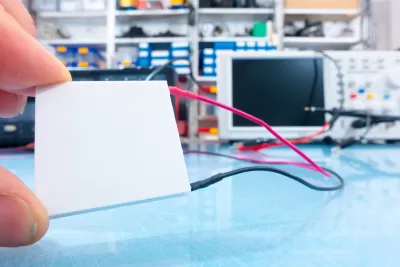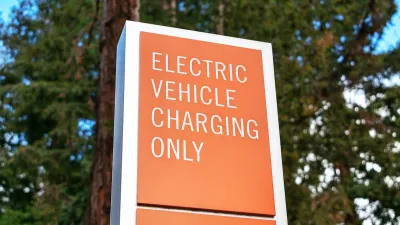Heat from industrial installations and buildings can be captured to create renewable electricity.

Scientists are working to develop devices that can harness waste heat from buildings and industrial uses to produce energy. As Muhammad Muddasar explains in The Conversation, most existing thermoelectric materials used to make such devices contain cadmium, lead, or mercury, toxic and often expensive substances.
Muddasar and other researchers at the University of Limerick and the University of Valencia have discovered a way to use wood-derived materials to convert waste heat. “This approach not only enhances energy efficiency, but also redefines how we view everyday materials as essential components of sustainable energy solutions.”
The research team used lignin, a byproduct of the paper industry, to convert low-temperature waste heat into electricity. “Since around 66% of industrial waste heat falls within this temperature range, this innovation presents a significant opportunity for eco-friendly energy solutions.”
In addition to capturing energy, thermoelectricity also requires storage solutions. Lignin-based porous carbon can also be used in supercapacitors to store energy. According to Muddasar, “This technology could find use in various settings, from providing power in remote areas to powering sensors and devices in everyday applications.”
FULL STORY: How waste heat could be captured and converted into green energy

Planetizen Federal Action Tracker
A weekly monitor of how Trump’s orders and actions are impacting planners and planning in America.

Maui's Vacation Rental Debate Turns Ugly
Verbal attacks, misinformation campaigns and fistfights plague a high-stakes debate to convert thousands of vacation rentals into long-term housing.

Restaurant Patios Were a Pandemic Win — Why Were They so Hard to Keep?
Social distancing requirements and changes in travel patterns prompted cities to pilot new uses for street and sidewalk space. Then it got complicated.

In California Battle of Housing vs. Environment, Housing Just Won
A new state law significantly limits the power of CEQA, an environmental review law that served as a powerful tool for blocking new development.

Boulder Eliminates Parking Minimums Citywide
Officials estimate the cost of building a single underground parking space at up to $100,000.

Orange County, Florida Adopts Largest US “Sprawl Repair” Code
The ‘Orange Code’ seeks to rectify decades of sprawl-inducing, car-oriented development.
Urban Design for Planners 1: Software Tools
This six-course series explores essential urban design concepts using open source software and equips planners with the tools they need to participate fully in the urban design process.
Planning for Universal Design
Learn the tools for implementing Universal Design in planning regulations.
Heyer Gruel & Associates PA
JM Goldson LLC
Custer County Colorado
City of Camden Redevelopment Agency
City of Astoria
Transportation Research & Education Center (TREC) at Portland State University
Jefferson Parish Government
Camden Redevelopment Agency
City of Claremont





























